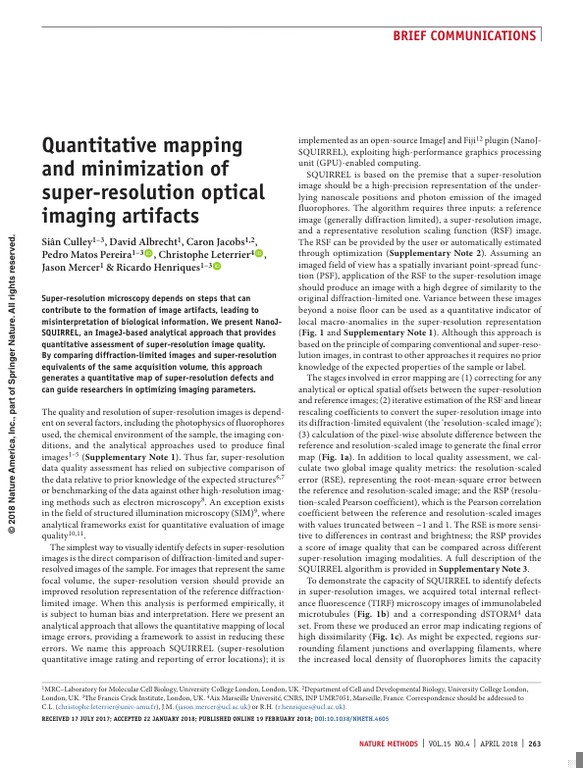Quantitative mapping and minimization of super-resolution optical imaging artifacts
Technologies: NanoJ-SQUIRREL (), NanoJ-SRRF () and QuickPALM
Paper published in Nature Methods, February 2018
Publisher: Nature Publishing Group US New York

The manuscript by Culley et al. introduces NanoJ-SQUIRRELL, an ImageJ-based analytical approach for assessing the quality of super-resolution images. Super-resolution microscopy can produce image artifacts that can lead to misinterpretation of biological information. The approach, named SQUIRREL, compares diffraction-limited images and super-resolution equivalents to generate a quantitative map of super-resolution defects. It uses a reference image, a super-resolution image, and a representative resolution scaling function image as inputs. SQUIRREL estimates the RSF and linear rescaling coefficients to convert the super-resolution image into its diffraction-limited equivalent and generates a pixel-wise absolute difference between the reference and resolution-scaled image as the final error map. It also calculates two global image quality metrics: the resolution-scaled error and the resolution-scaled Pearson correlation coefficient. The manuscript demonstrates the capacity of SQUIRREL to identify defects in super-resolution images using TIRF microscopy and a corresponding dSTORM data set, as well as simulated data. SQUIRREL is not limited to single-molecule localization microscopy and can provide complementary information.